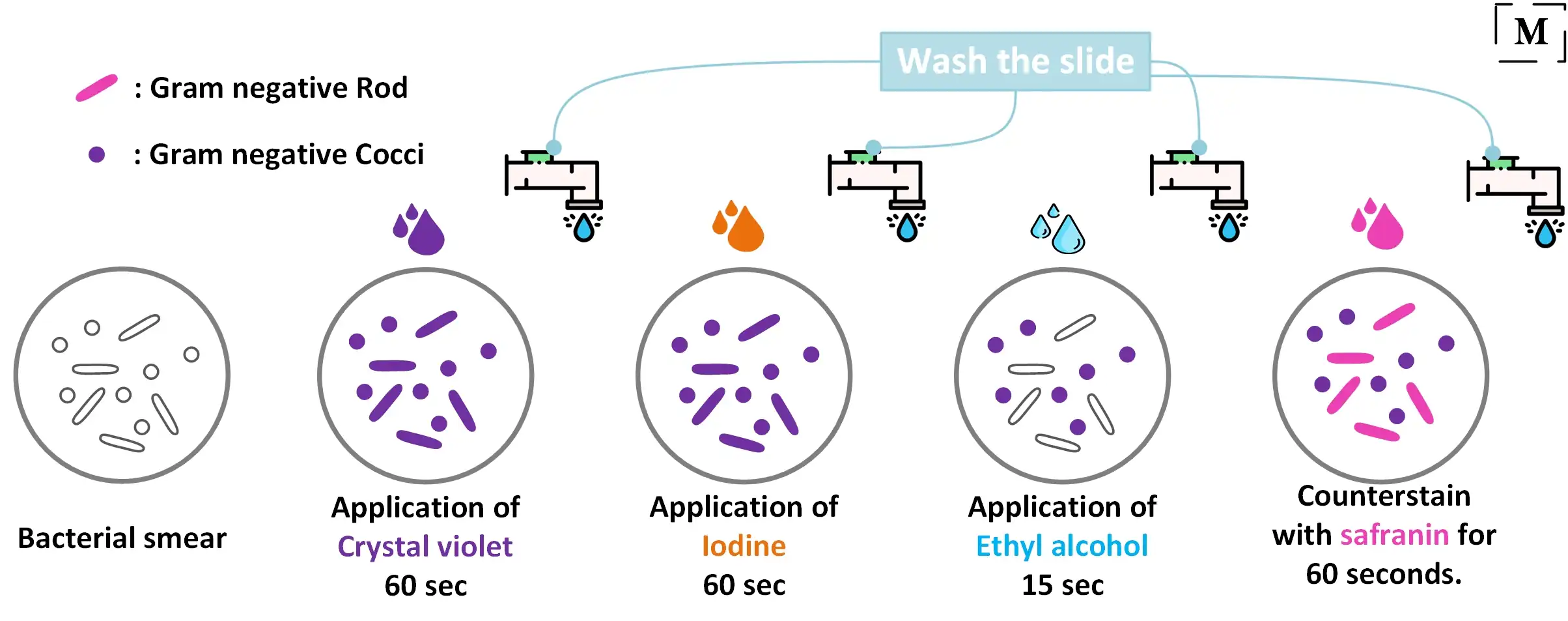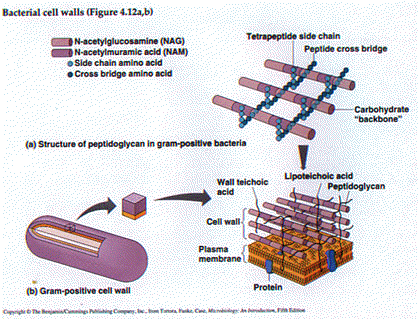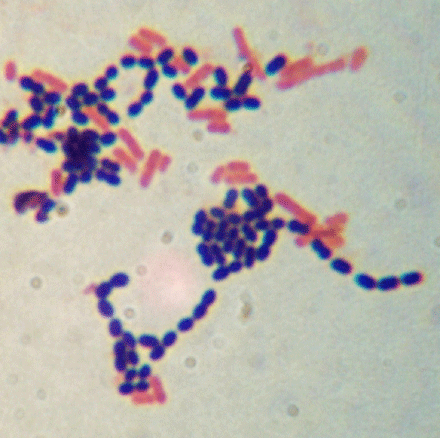O endospore staining O negative staining O simple staining o complex staining O differential staining. The Gram stain procedure distinguishes between Gram positive and Gram negative groups by coloring these cells red or violet.

Exam 1 Review Flashcards Quizlet
Subsequently a decolorizer often solvent of ethanol and acetone is used to remove the dye.

. The gram staining procedure and principle dont work with these organisms because they lack peptidoglycan. False Iodine is the decolorizer in the Gram stain. Which of the following is used as a decolorizer for the endospore staining technique.
Question 4 075 pts The Gram-staining procedure is best described as which. Gram staining is still the cornerstone of bacterial identification and taxonomic division. Forcing a dye into resistant bodies with heat to distinguish between spores and cells.
The next step also known as fixing the dye involves using iodine to form crystal violet- iodine complex to prevent easy removal of dye. Air dry and heat fix Crystal Violet was poured and kept for about 30 seconds to 1 minutes and rinse with water. The next step also known as fixing the dye involves using iodine to form crystal violet- iodine complex to prevent easy removal of dye.
Prepare the smear of suspension on the clean slide with a loopful of sample. Gently flood smear with crystal violet and let stand for 1 minute. The Gram stain is a differential method of staining used to assign bacteria to one of two groups gram-positive and gram-negative based on the properties of their cell walls.
Gram staining method the most important procedure in Microbiology was developed by Danish physician Hans Christian Gram in 1884. The gram stain is a sequential staining technique invented for differentiating bacterial species. Differential If during the Gram stain procedure the bacterial cells were viewed immediately after crystal violet was applied gram-positive cells would be purple but gram-negative cells would be colorless.
It will undergo a large amount of refraction. Gram staining is a common technique used to differentiate two large groups of bacteria based on their different cell wall constituents. Even though the gram staining procedure is best described as a differential staining technique it cant be used for some organisms like the archaea or eukaryotes.
Place slide with heat fixed smear on staining tray. Differential staining When there is a substantial difference in refractive index between two materials which of the following describes what will happen to light passing from one material to the other. It is also known as Gram staining or Grams method.
The Gram staining procedure is best described as an __ staining technique. Gram-staining is a test to classify the bacteria. On a microscope.
Procedure of Gram Staining Take a clean grease free slide. You can use a flamed loop to transfer the cells but a sterile toothpick is. Subsequently a decolorizer often solvent of ethanol and acetone is used to remove the dye.
The procedure is named for the person who developed the technique Danish bacteriologist Hans Christian Gram. The first step in gram staining is the use of crystal violet dye for the slides initial staining. The Gram-staining technique uses two types of stains.
A primary color and a counterstain. The procedure is based on the ability of microorganisms to retain color of the stains used during the gram stain reaction. From your microbiology course you remember that this staining procedure involves application of India ink to detect the presence of bacterial capsules.
Gram staining is a differential staining technique that differentiates bacteria into two groups. Gram stain is used to differentiate the bacterial cells by staining the cell wall and distinguish two major groups of bacteria that are gram-positive and gram-negative. The gram staining procedure is best described as a Differential staining technique Step-by-step explanation A differential stain is used to different types of microorganisms or different structures in the microorganisms by using multiple stains.
Gently flood the smear with Grams iodine and let stand for 1 minute. The cell wall of gram-positive bacteria retains primary stain and the cell wall of gram-negative bacteria takes counterstain. The Gram staining procedure is best described as a n __ staining technique.
The Gram-staining procedure is best described as which of the following. Which of the following are pigments used in microscopy to absorb and reflect light. The Gram stain is the differential stain that stains the bacterial cells differently according to the type of cell wall.
This differential staining procedure separates most bacteria into two groups on the basis of cell wall composition. The main purpose of this procedure is to detect the tetanus bacillus Clostridium tetani which can occur in these products. The Gram-staining procedure is best described as which of the following.
Flood the grams iodine for 1 minute and wash with water. A bacterial sample can be heat. The first step in gram staining is the use of crystal violet dye for the slides initial staining.
Tilt the slide slightly and gently rinse with tap water or distilled water using a wash bottle. It is the most widely used and the most important staining technique in bacteriology especially in medical bacteriology. Gram stain results from the patient specimen indicate a bacterial infection.
We have to introduce a dye to bacteria. Gram staining is a differential bacterial staining technique used to differentiate bacteria into Gram Positive and Gram Negative types according to their cell wall composition. Gram positive - gram negative - long purple short pink.

Gram Staining Better Understanding Of The Procedure And Easy Interpretation Of The Results

Gram Stain Module Flashcards Quizlet


0 Comments